Last week, accompanied by a small group of novice lepidopterists (me being very very novice!), I attended a ‘Butterfly Study Day’, hosted by Dave Warburton, Sutton’s senior biodiversity officer, in Carshalton.
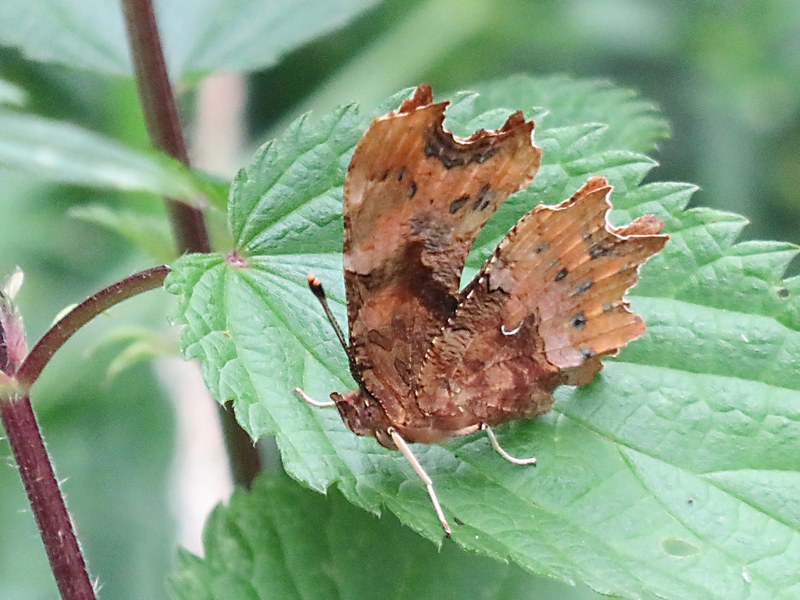
Comma – Polygonum c-album
I’ll be honest, I have had a hard time finding butterflies massively interesting in the past, and found it frustrating out on task days when Dave had shouted out the name of some kind of winged beast, only for a blur of brown and wingbeats to flutter out of my field of vision before I could get a decent look.
This was the majority of my interactions with butterflies until recently. Whenever one was nicely perched on a leaf, it would flit off as soon as I got any closer. To be fair, I’m not known for my nimble grace and stealth. Something to work on, perhaps.
In the butterfly season this year though something changed. It could have been to do with Dave taking me under his wing (hah!) for a few butterfly transects at Roundshaw Downs, or a general want for more knowledge about the natural world but for the first time since childhood, butterflies piqued my interest. Fortunately for me, Dave had his yearly butterfly identification course already planned. Coincidence or divine intervention? Coincidence, of course. The Great Butterfly God (All hail his most venerable proboscis!) cares not for the trifling concerns of humans…
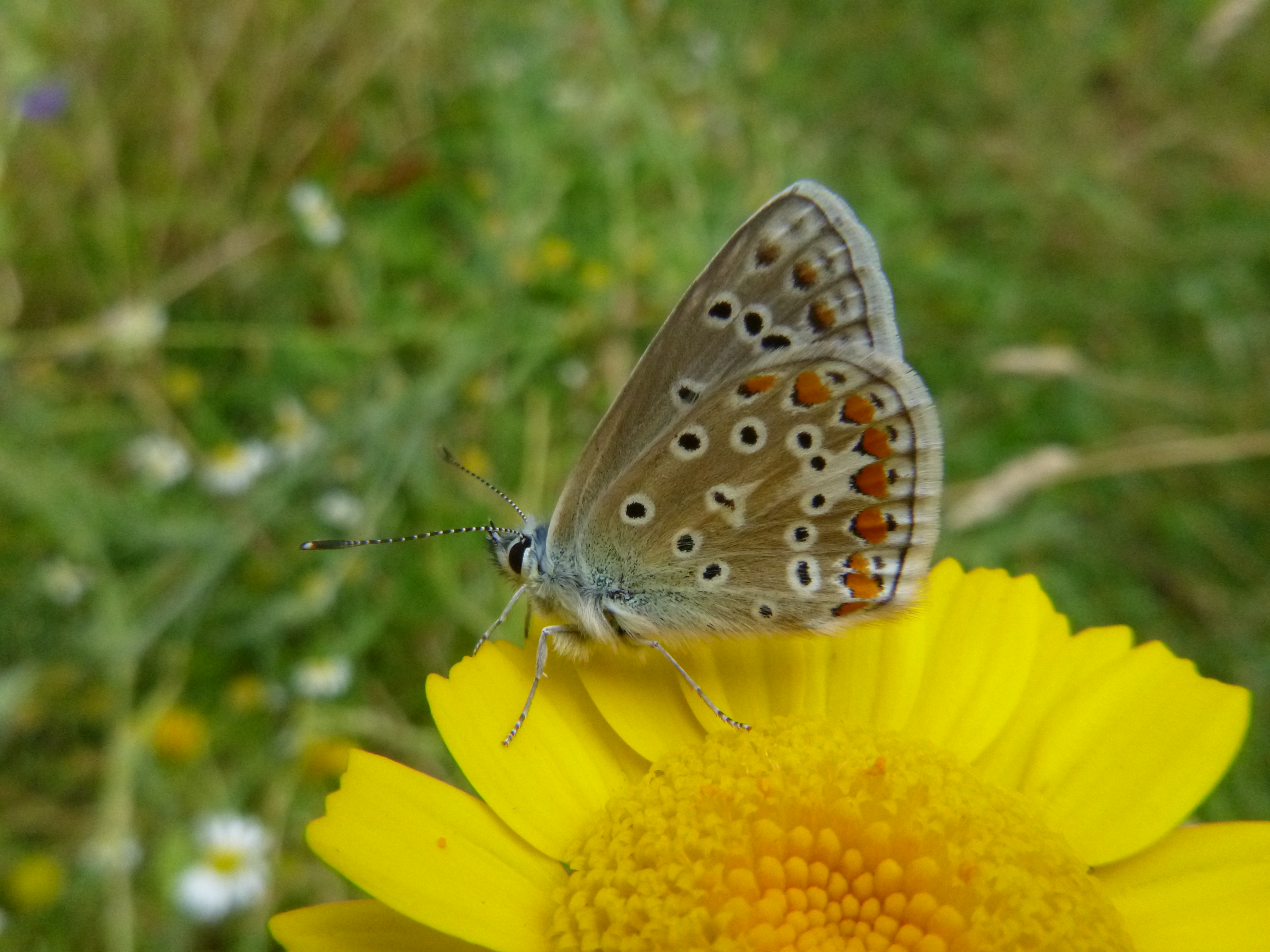
Common Blue – Polyommatus icarus
To kick off the course we all introduced ourselves and briefly mentioned how much we already knew about butterflies. It was a relief to know that we were all at pretty much the same level, so my own lepidopteral ignorance wasn’t going to stick out like a sore thumb. We knew a handful of the more common species, and wanted to learn more.
And learn more we did! Dave started with the basics, going through butterfly biology and ecology from life cycle to food plants to habitat types. A lot of this I already knew, but a few surprising facts came to light.
One that interested me was that there is no scientific distinction between butterflies and moths. There are many rules of thumb which for the most part ring true, but fall apart when scrutinised, like moths only flying at night (what about all those day flying moths?) and moths being fluffy/furry (see the Marbled White below and tell me you wouldn’t give it a little cuddle!).
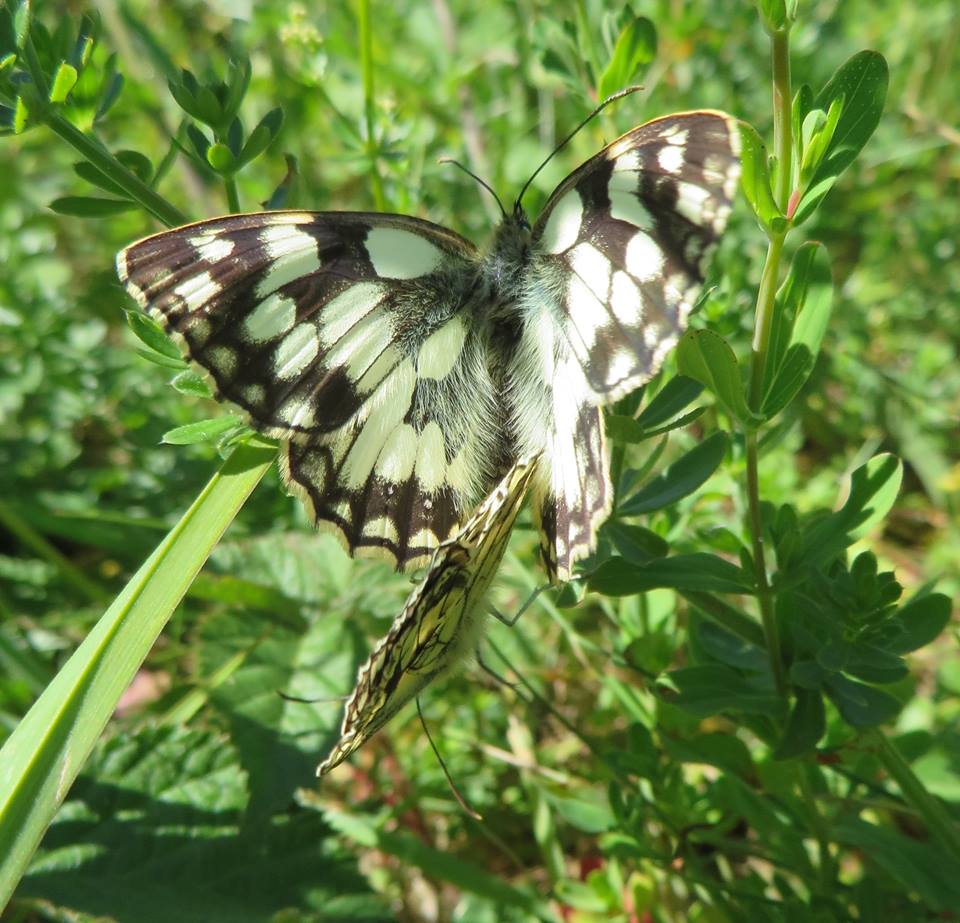
Marbled whites – Melanargia galathea
The most reliable – but hard to see in the field – rule to differentiate a moth and a butterfly is the way the wings are coupled, allowing hind and fore wing to move as one. Moths have Frenulo-retinacular couplings, where a small hook or lobe on the hind wing is hooked to the forewing, whereas butterflies have Amplexiform coupling, where the wings overlap sufficiently so they don’t need this hook to move as one. Of course, there are still exceptions to the rule, there is a species of Skipper which is considered a butterfly and yet has a hooked wing.
I’m not going to lie, I don’t fancy pulling the wings off every butterfly I see, so for now I’ll live by ‘if it doesn’t look like anything in my guide book, it’s probably a moth’. It’s a fairly safe bet, too, as there are only 59 species of butterfly in the UK. There are around 2,500 moths. I’ll try and master our butterflies first methinks.
Before heading out on a field trip we had a run down of ID tips, including which Blues are actually brown, which Whites are actually pretty yellow and which species like ‘puddling’ – a somewhat euphemistic term for a practice of certain types of butterflies who seem to enjoy various bodily excretions… I won’t go into too much detail but suffice to say it made me a little less excited to see a Purple Emperor.
After a spot of lunch we headed out to Roundshaw Downs armed with nets and a ‘butterfly pavillion’ (that’s a big mesh cage to you and I, hardly the Ritz is it?) to test out our newly learned skills. The final skill to master was the ancient and mystical martial art of butterfly catching. Initially, I was rubbish. While everyone else was rounding up Essex Skippers, Meadow Browns and Marbled Whites galore, I was flailing, running, swearing and sweating trying to catch the blighters. As I may have mentioned earlier, I’m not known for my grace.
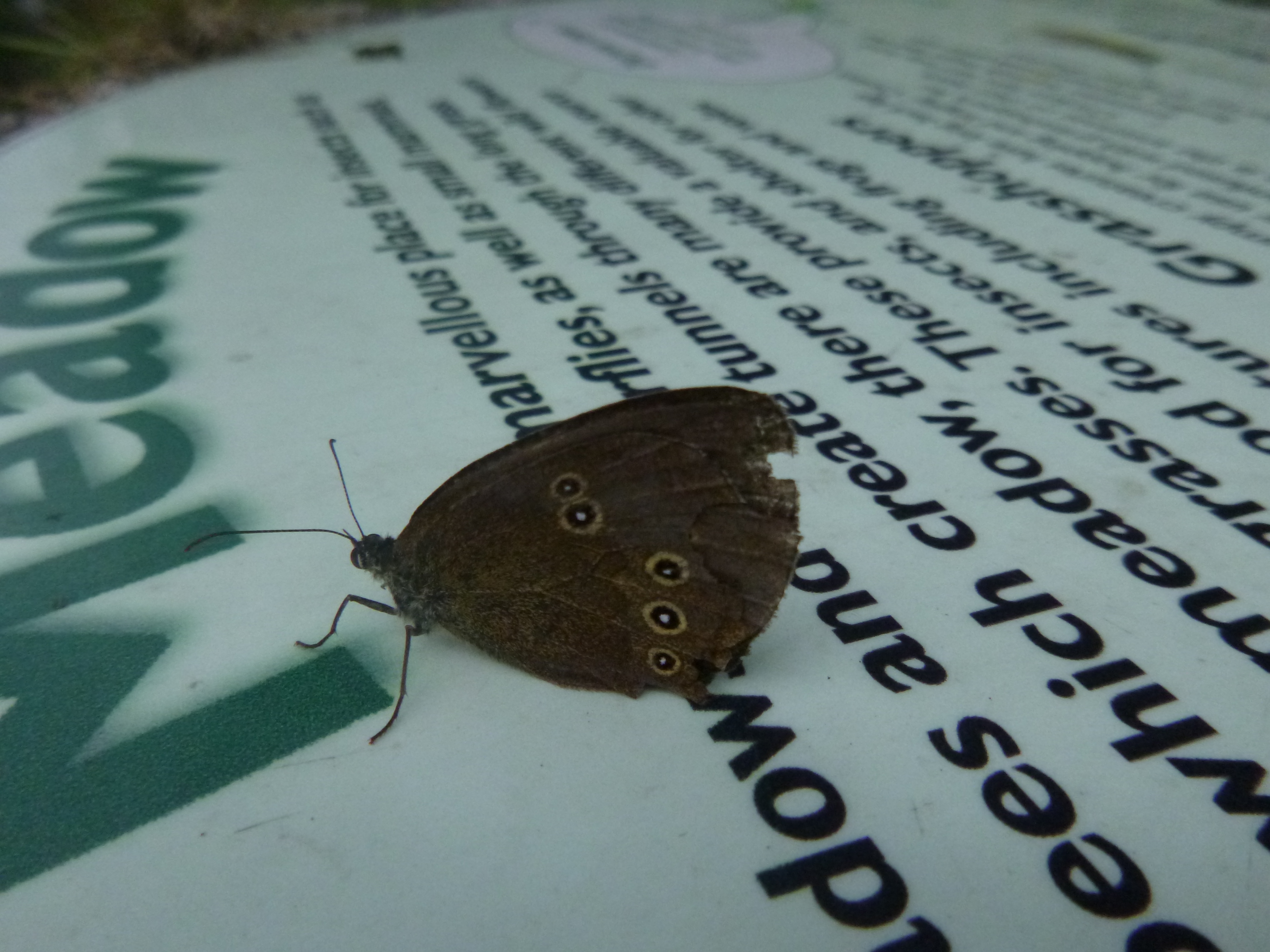
A slightly moody and beaten up Ringlet (Aphantopus hyperantus) at Sutton Ecology Centre
On bagging my first Ringlet, a really fresh and lively specimen, showing off the line of rings (it was far fresher than the more tattered bloke I found at the ecology centre, above), I felt that addictive, life-affirming pang of accomplishment. I was hooked!
We spent the next few hours in the meadows, scrapes, scrub islands and woodlands of roundshaw downs chasing butterflies of all shapes and sizes – releasing them all shortly after, of course. Fly free my pretties!
The number of species we caught in such a short time was astounding to be honest, and seeing them captured and up close is a surefire way to cement the IDs in our minds. For instance while the Meadow Brown (Maniola jurtina) has a flash of orange on the forewing, it can often look just… browny, rather like a Ringlet (Aphantophus hyperantus – above), depending on the light and how beaten up the poor little fellow is. Up close and personal, however, you can clearly see the lack of a ringlet’s rings, and the light brown to orange patch on the forewing.
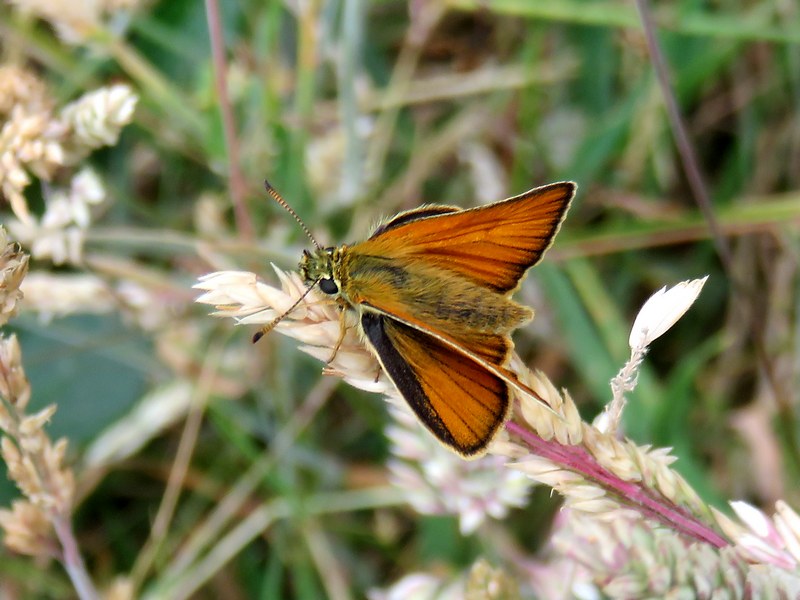
Essex Skipper – Thymelicus lineola
Then there’s the Small and Essex skippers, apparently often called ‘Smessex’ when on the wing because they are almost impossible to distinguish without looking incredibly closely at differences in the sex brands (small area of pheromone-laced scales on the wings) on the males, and a tiny blotch of black on the tip of the antennae of Essex Skippers. We decided that all of our skippers were of the Essex variety (Thymelicus lineola), bearing that jet black antennae tip.
We also caught Large and Small whites, Commas, Small Tortoiseshells, Green Veined Whites, and a host of moths – some of which were just as beautiful as the butterflies. We also had a few species just beyond our grasp, with Holly Blue and Speckled Woods fluttering around but evading capture.
All in all the Butterfly Study Day was a great success and a massively fun outing.
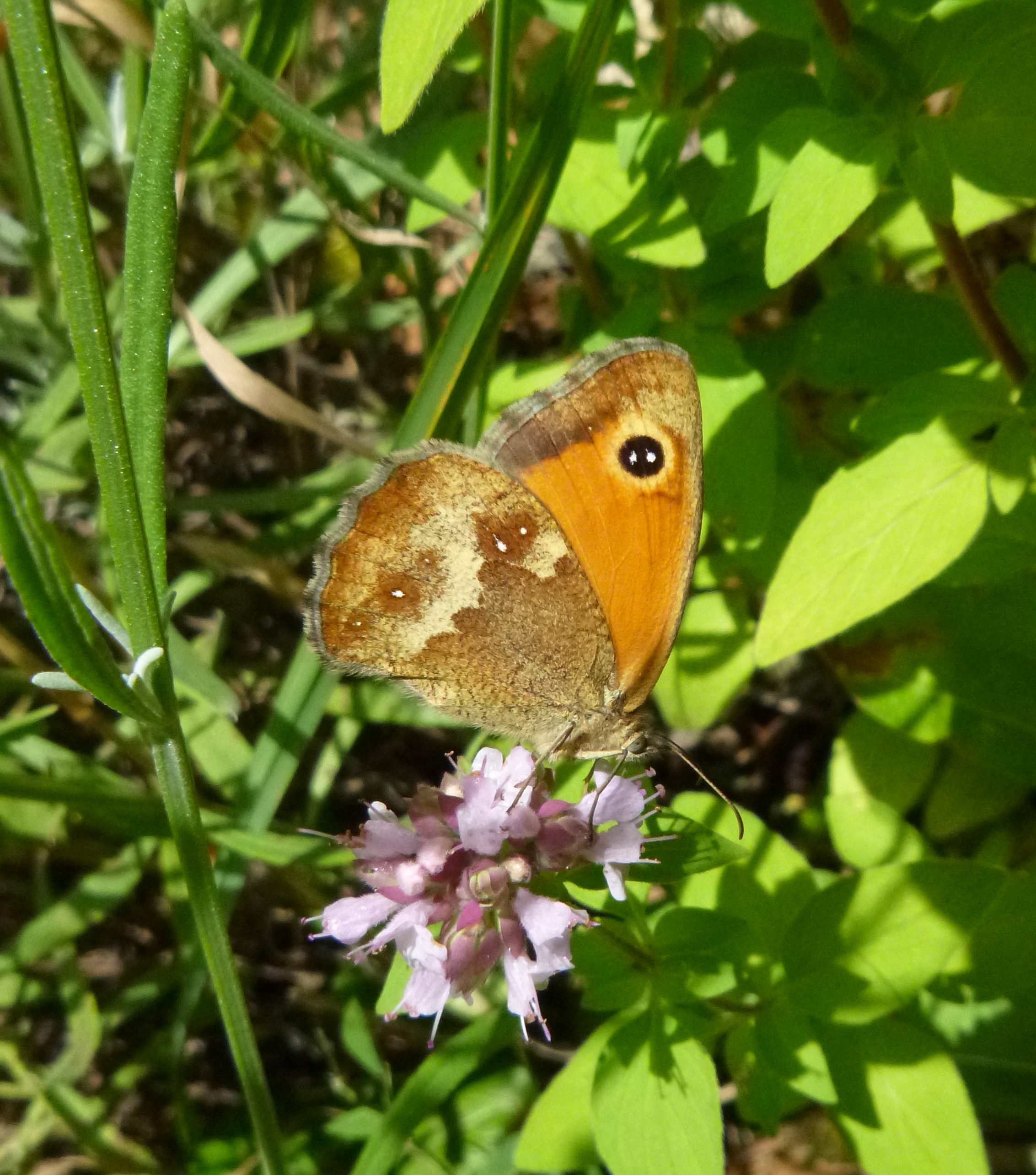
Gatekeeper – Pyronia tithonus
I have been out almost every day since spotting and counting butterflies, and even managed to get some family and friends involved! On a walk the other day, my girlfriend wasn’t too pleased with my newfound lepidopteral knowitall-ism, me pointing out a new critter off in the bushes every few feet, stopping to note it down and take a picture. Yet like any burgeoning addiction, she was pointing them out quicker than my eyes could follow within ten minutes.
It was a slippery slope but I think I’ve found my new vice. All hail the Great Butterfly God!
For more information on butterfly identification and ecology, visit Butterfly Conservation
For more information on our upcoming study days and other events, visit our event page and book using the instructions on that page.
Thanks for reading!
-Adam






